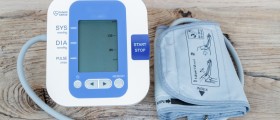
Pulmonary hypertension is also wellknown as pulmonary artery hypertension or PAH which is one of the types ofhigh blood pressure, typical only of the arteries in the lungs. They are commonlyknown as pulmonary arteries and are located at the right side of the heart.Pulmonary hypertension is a very serious and incurable disease, and can be evenfatal if it is not treated on time. Pulmonary hypertension occurs when thepulmonary arteries and capillaries cannot normally transport the blood becauseof some damage or blockage. This malfunction causes the high pressure in thearteries in the lungs, thus leading to the weakening of the heart because theright ventricle must pump harder in order to supply the lungs with enoughblood.
Types of pulmonaryhypertension
There are two types of pulmonaryhypertension: idiopathic pulmonary hypertension and secondary pulmonaryhypertension. The causes for the idiopathic pulmonary hypertension are notknown while the causes for secondary pulmonary hypertension are some othermedical conditions that lead to the high blood pressure in thelungs. Pulmonary hypertension can be mild, moderate and severe based onthe pressures.
Symptoms
There are many symptoms andwarning signs for pulmonary hypertension. They can appear alone, or in thecombination, and can vary from person to person, though the most frequentsymptom is dyspnea, or shortness of breath. In the early stages of pulmonaryhypertension this occurs only while the person exercises, but later, whenpulmonary hypertension progresses it happens even when the person rests.Furthermore, fatigue, dizziness and syncope are also some of the signs of thisdisease.
The person who suffers from thisillness can have heart palpitations and pain in the chest, but cyanosis canalso appear as a symptom, which is a medical term for the bluish color of thelips and the skin. Moreover swelling in the ankles and legs also callededema and swelling in the abdomen, usually called ascites, are symptoms thatare also frequent for pulmonary hypertension. In addition to thesesymptoms, cough and lethargy can also happen, as well as angina and hypoxia,the term used for low oxygen level in the blood. All these symptomsmentioned are usually unnoticeable at the beginning, but as the diseasegradually develops the symptoms become perceptible. In the case of severepulmonary hypertension, auscultation and right ventricular heave usually occuras the main symptoms.
Diagnosis of pulmonaryhypertension
When the person detects somesymptoms, it is very important to visit the doctor, who will do some test todiagnose the disease. Echocardiogram and right heart catheterization are twovery common tests. With right heart catheterization the doctor can evenpredict what will be the patient's response to the certain treatment andmedications.

















Your thoughts on this
Loading...